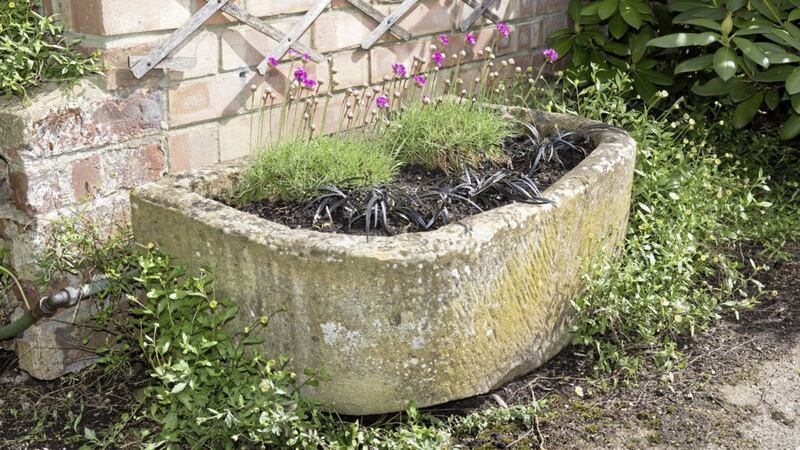I LIVE close to the coast so it’s only right that my garden reflects its location. I’m not out to create a replica of the shoreline in the area around the house but it makes sense both from an aesthetic and horticultural point of view that many of the plants feel at home beside the sea. It’s the same with the materials.
Most of the inanimate objects that decorate my garden are salvaged from along the coast – the driftwood stumps, the lobster creels, the buoys, and the barely recognisable rusted remains of a tractor wheel, brought home across Ireland from the Atlantic seaboard. A formal rose garden or bedding in symmetrical patterns would look incongruous in such maritime-tinged surroundings.
One plant that fits perfectly into the parched, minimal landscape of the shoreline is thrift (Ameria maritima) – aka sea pink or rábhan, as Gaeilge.
Its robust habit reflects the extreme conditions it prefers – a low-growing carpet of tough tufted grass with pink papery flowers floating six inches above. Even the strongest gale won’t trouble it, merely prompting the huddled cluster of lollipop flowers to dance all the more eagerly between May and September.
The native thrift is a common sight along my nearest stretch of Co Down coast, which is more rocky shoreline than beach and dunes. It likes alpine conditions – poor or little soil and plenty of sun. Bees, butterflies and other pollinating insects are drawn to its nectar.
Zoe Devlin’s invaluable Wildflowers of Ireland (Collins Press) tells us that thrift is common right around the Irish coast and in some mountain locations. The book notes how the thrift flower appeared on the old English 12-sided threepenny bit that was introduced in 1937 – subliminally urging pre-war self-imposed austerity?
The late film-maker Derek Jarman, who created a quirky coastal garden on the shingle at Dungeness in Kent close to the power station, had a fondness for thrift. Having bought a plant at wild flower nursery he recalled: “My one plant, with its bobbing pink heads, is now 50. It’s going to leap about, soon it will across the road.”
As Jarman discovered, if it likes your conditions, thrift will spread – though only to nuisance rather than invasive levels. Its preferred habitat mimics the shingle and rocks of the shoreline, hence it’s good for gravel gardens and rockeries. Ordinarily, the Irish would regard drought tolerant gardening as something people do on the Continent but the dry weather recent over weeks may have awakened an appreciation of all things arid. You can use the native thrift in your garden alongside other drought-tolerant plants like lavender, blue fescue grass and Lychnis coronaria.
There are also a range of culativars – cultivated varieties – that will fulfil a similar role as the native sea pink.
Armeria maritima 'Alba' is a white variety that flowers from late spring through summer. The neat and compact Armeria juniperifolia 'Bevan's Variety' is related to the common thrift. From late spring, it boasts groups of rosy-pink flowers that sit close to the carpet of foliage. Deemed worthy of the Royal Horticultural Society's Award of Garden Merit (AGM), it also goes by the name of Armeria caespitosa. Also recommended to be used in combination for a 'patchwork' effect are the dark red 'Bloodstone' and the light pink 'Vindictive', another AGM holder.








